Montana is a treasure trove of natural beauty and diverse ecosystems, renowned for its breathtaking landscapes and thriving wilderness. From towering mountains and crystal-clear lakes to sprawling meadows and dense forests, this Northwestern state offers a paradise for both nature enthusiasts and adventure seekers alike. However, amidst the awe-inspiring flora and majestic landscapes of this state, several plants conceal a dangerous secret: a single touch can bring consequences to those that make contact with these seemingly helpless and innocent plants.
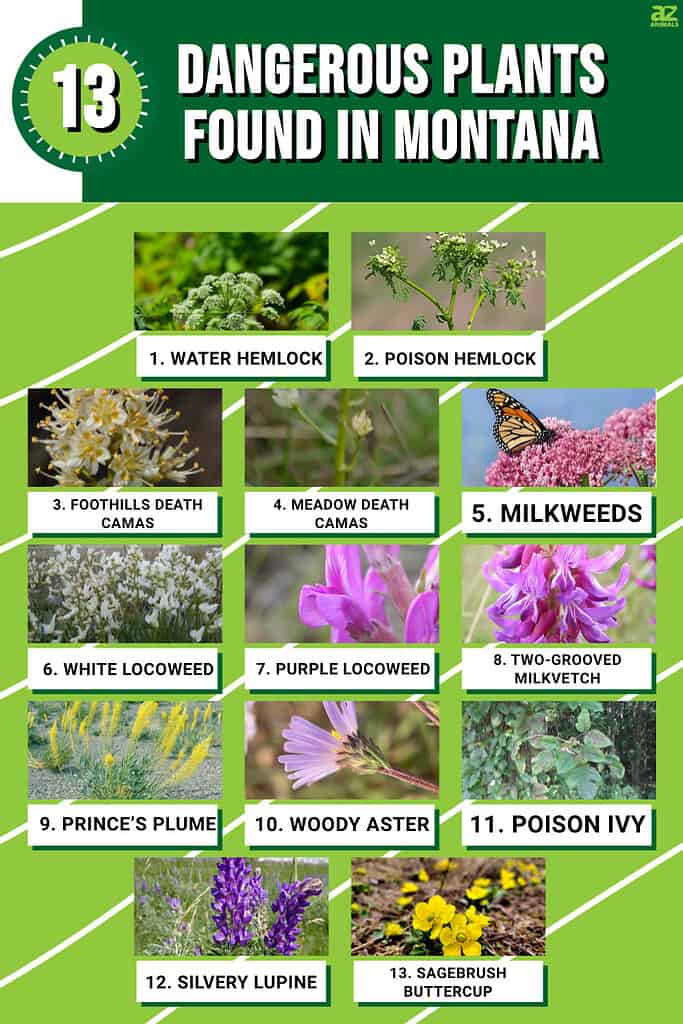
In this article, we will uncover 13 dangerous plants that call Montana home. Everything from menacing thorns to poisonous sap, these plants have evolved with a dangerous arsenal that protects them from harm. Whether you want to explore Montana’s wilderness or simply want to be aware, here are the plants you should look out for in Montana.
1. Water Hemlock (Cicuta maculata)
Be cautious around water hemlock, the deadliest plant in North America! It contains highly toxic substances that can harm both animals and humans. Even a small quantity of this plant’s toxic substances can lead to poisoning. One can easily distinguish water hemlock from poison hemlock by examining its main taproot and stem. Water hemlock has a chambered, swollen base and a hollow stem, while poison hemlock has a smooth, purple-spotted stem and lacks a chambered base.
Water hemlock lives up to its name by flourishing in moist habitats like ditches, stream banks, pond edges, and marshes. This hazardous plant begins to grow in the spring, with flowering occurring in June or July at higher elevations. It is crucial to note that water hemlock is extremely dangerous to ingest or apply on the skin, as all its parts are poisonous and can cause death in as little as 15 minutes.
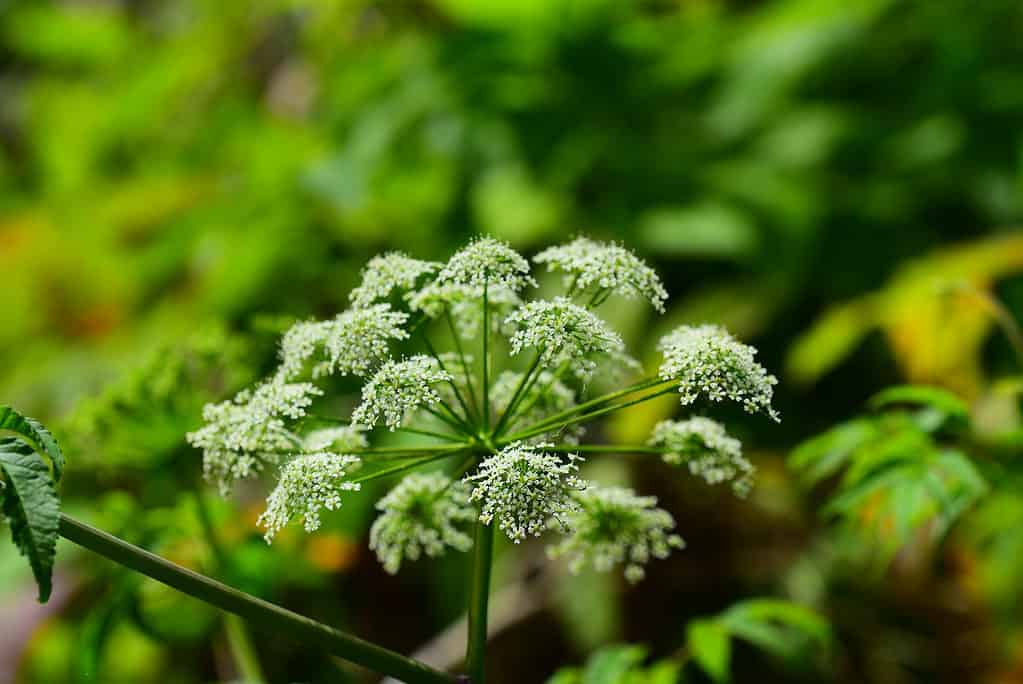
Each flower head of the water hemlock (
Cicuta maculata) is composed of clusters of small, five-petaled white flowers.
©iStock.com/cturtletrax
2. Poison Hemlock (Conium maculatum)
Poison hemlock, a noxious weed belonging to the parsley or carrot family, thrives in areas with ample moisture and frequent disturbance. Its growth cycle typically spans two years, though it may persist as a perennial in favorable environments. This toxic plant can be found adorning fence lines, flourishing in irrigation ditches, and colonizing other moist, neglected areas.
To differentiate poison hemlock from its harmless look-alikes, such as wild carrots and parsley, it is crucial to examine its characteristics closely. Poison hemlock features a smooth, hairless stem with purple spots or streaks. It can grow up to 6 feet tall and produces clusters of small white flowers in an umbrella-like shape.
Accidental ingestion of poison hemlock can lead to various symptoms, varying from vomiting and seizures to respiratory failure. Regrettably, there is no known antidote for hemlock poisoning, making it a potentially fatal condition that affects both humans and animals.
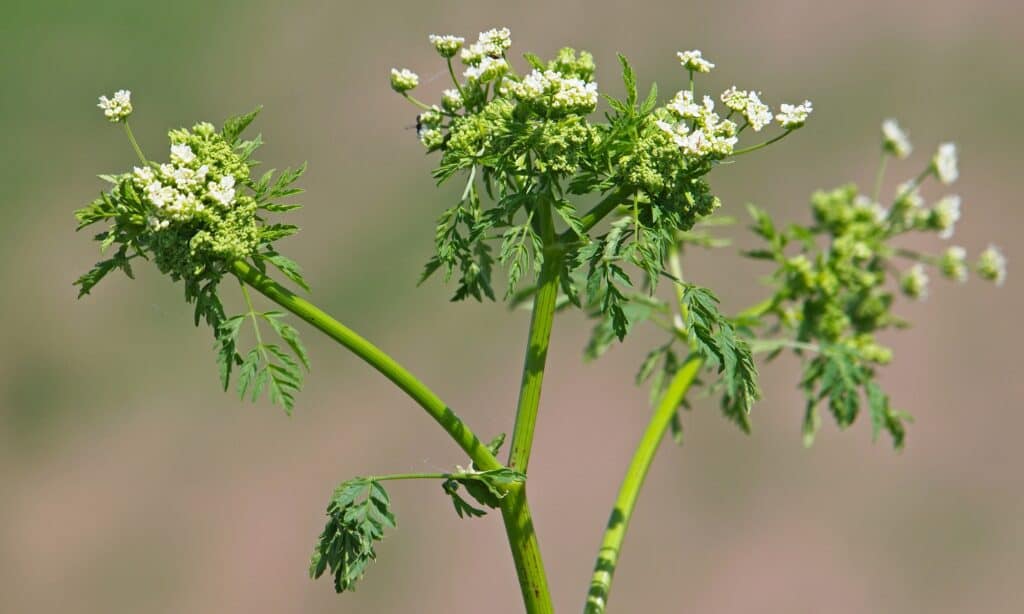
Poison hemlock (
Conium maculatum) thrives near pastures and rivers.
©iStock.com/emilio100
3. Foothills Death Camas (Zigadenus paniculatus)
Foothill death camas is a perilous flowering plant known for its toxicity to both livestock and humans. Although its bulb may look like an onion, it lacks the characteristic onion smell. This hazardous plant is among the earliest to sprout during the onset of spring.
Adapted to a wide range of habitats, from deserts and foothills to montane regions, this plant’s entire anatomy, including leaves, stems, and flowers, harbors toxic steroidal alkaloids capable of causing cardiovascular failure. Eating any part of the plant is generally poisonous to animals.
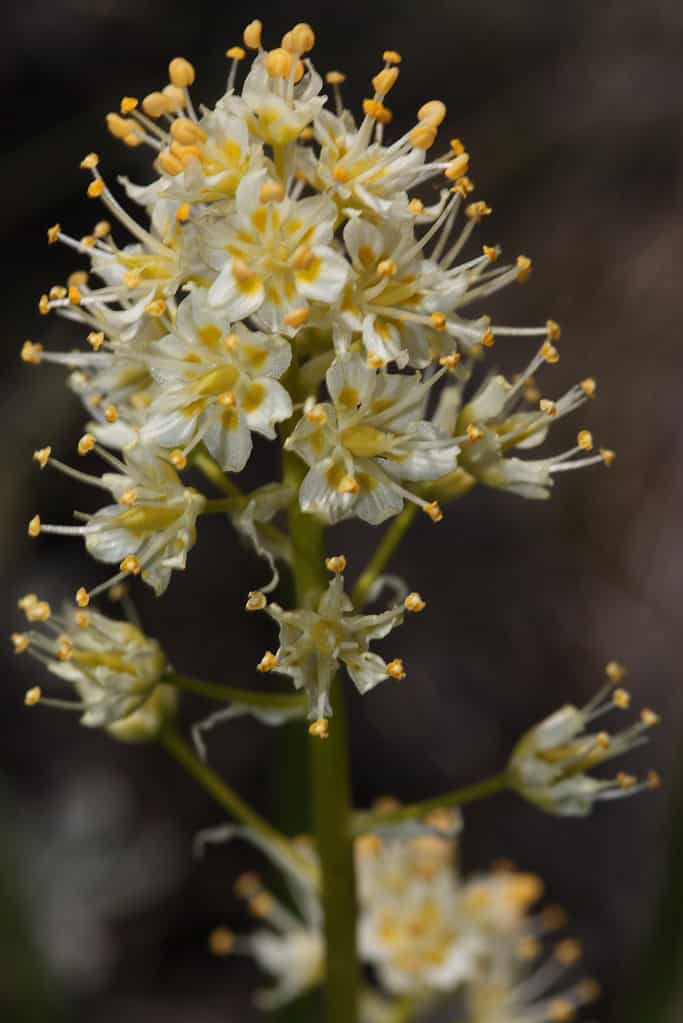
Foothills death camas (
Zigadenus paniculatus) is among the earliest to sprout during the onset of spring.
©Walter Siegmund / CC BY-SA 3.0 – License
4. Meadow Death Camas (Zigadenus venenosus)
Meadow death camas, a prevalent native perennial in Montana’s foothills and range areas, thrives as a cool-season forb. With its early spring growth pattern, this plant, similar to foothill death camas, blossoms during April and May.
Meadow death camas can look similar to other non-toxic plants, such as wild onions or lilies. The plant typically has long, narrow leaves and produces clusters of white or cream-colored flowers.
It’s crucial to be aware that every part of the meadow death camas plant is highly toxic and can be dangerous for both humans and livestock. If animals consume between 2% to 6% of their body weight in this plant, it can result in a fatal outcome. Interestingly, the plant attracts a specialized mining bee called Andrena astragali, which may be the sole bee capable of withstanding its toxins.
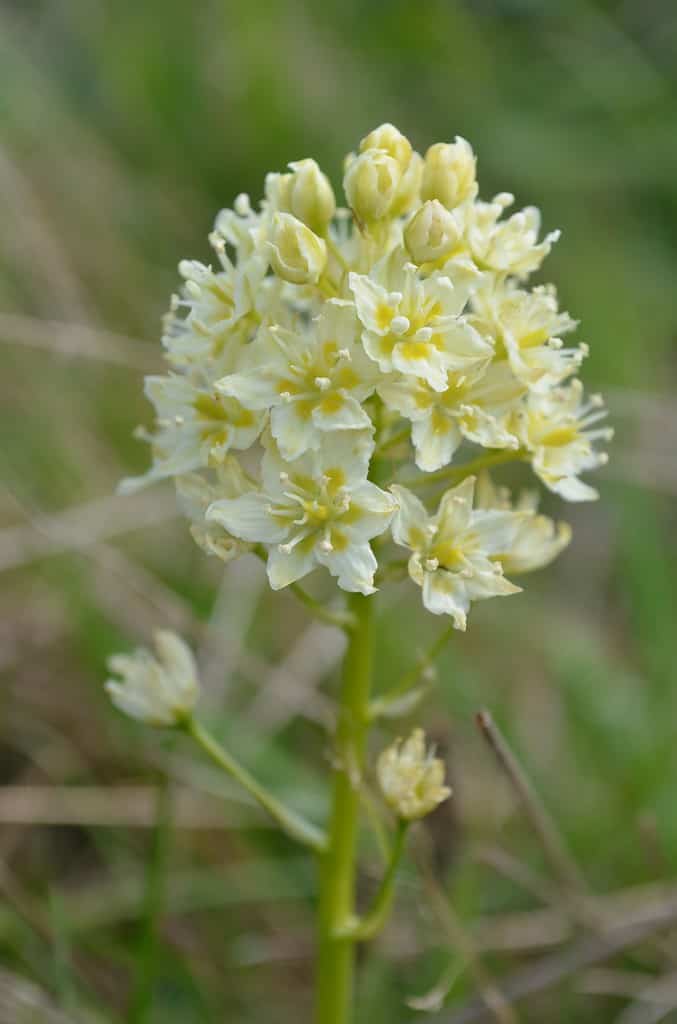
Every part of the meadow death camas (
Zigadenus venenosus) plant is highly toxic and can be dangerous for both humans and livestock.
©Bureau of Land Management Oregon and Washington / CC BY 2.0 – License
5. Milkweeds (Asclepias spp.)
Montana is home to a variety of native milkweed species, each with its own level of toxicity. Regardless of the species, all milkweeds are potentially dangerous. These flowering plants can be commonly found along fence rows, roadsides, fields, prairies, and pastures. Typically, they bloom from late spring until the end of summer.
It’s important to note that all parts of the milkweed plant contain toxic cardiac glycosides. Milkweed poses a danger to various animals and even humans. Surprisingly, certain insects can also be affected by the toxins present in milkweed. However, on the flip side, insects like monarch butterflies have evolved mechanisms to tolerate and even utilize the toxins found in milkweed plants. These insects have developed the ability to sequester and store toxins for their own defense against predators.
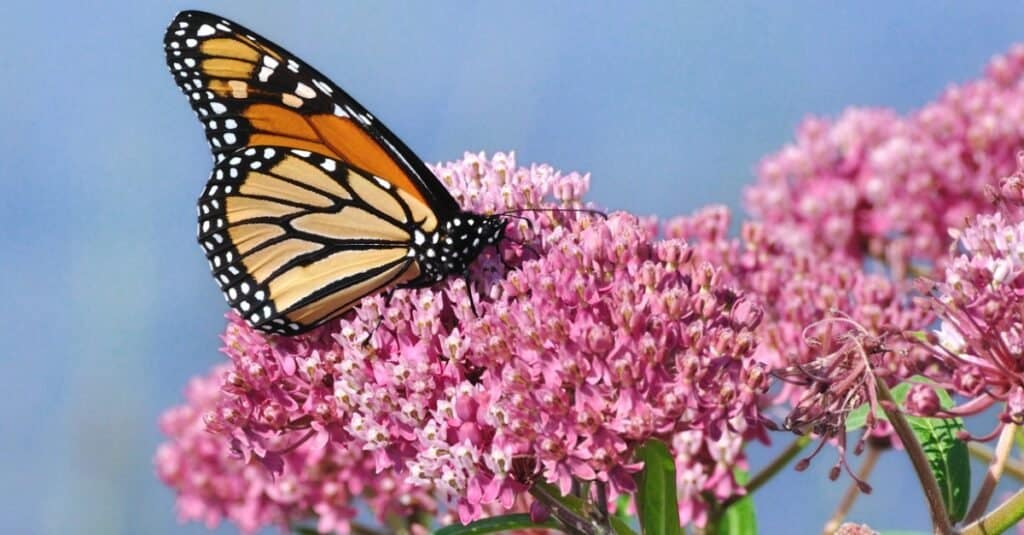
Milkweed ((
Asclepias) is the only flower that monarch caterpillars use as a food source.
©iStock.com/herreid
6. White Locoweed (Oxytropis sericea)
White locoweed is a fascinating plant characterized by dense tufts of grayish and hairy foliage. It boasts elegant racemes of white or cream-colored pea flowers, gracefully held just above the basal leaves on long stalks. Depending on the specific species, locality, and moisture conditions, growth can start in late fall, winter, or early spring. Prairies, mountain meadows, and open mountain slopes serve as this plant’s native habitat.
One must exercise caution around white locoweed, as it is poisonous at all stages of growth. The plant remains dangerous throughout the year, even when it has matured and dried. Every part of the plant contains toxins. In circumstances where desirable forage is scarce, animals may be compelled to consume locoweed, posing a serious risk. For instance, as little as 5/8 lb. of the plant can prove fatal to sheep within just half an hour!
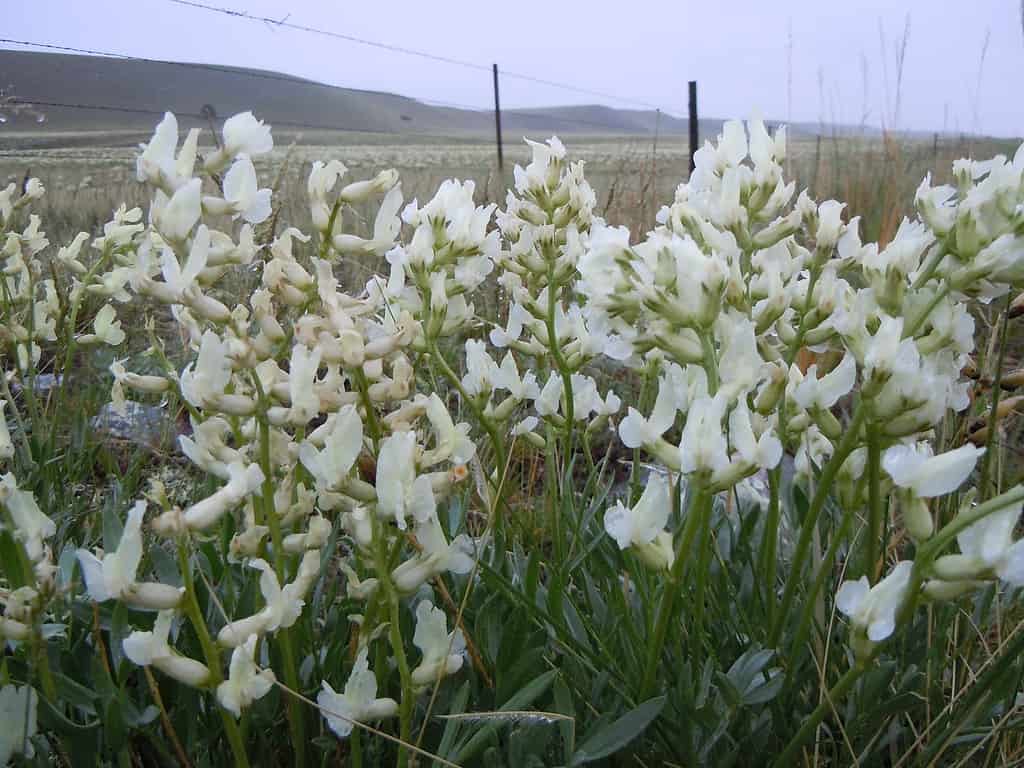
The abundance of this grass along with an abundance of other very widespread grasses (e.g., Stipa comata and Agropyron dasystachyum) suggests a long history of overstocking.
©Matt Lavin / CC BY-SA 2.0 – License
7. Purple Locoweed (Oxytropis lambertii)
Montana is also home to purple locoweed, another intriguing species. These perennial herbaceous plants feature long tap roots and basal leaves that form in groups, measuring around 6 to 8 inches in length and adorned with silvery hairs. The striking purple flowers resemble peas and possess a pointed keel.
Similar to white locoweed, the growth of purple locoweed varies depending on several factors, and timing can differ. These plants thrive in the decomposing granite soils of foothills and prairies. It’s important to note that purple locoweed carries the same level of toxicity as its white counterpart and should be strictly avoided at all costs.

Oxytropis lambertii. This species is well marked by its narrowly elliptical leaflets covered with medifixed (dolabriform) hairs.
©Matt Lavin / CC BY-SA 2.0 – License
8. Two-Grooved Milkvetch (Astragalus bisulcatus)
Two-grooved milkvetch, a shrubby and herbaceous perennial, is native to the beautiful Mountain West region, including Montana. This captivating plant delights with its showy flowers that bloom from late spring to early summer. It adds a touch of elegance to prairies, roadsides, and other upland habitats.
While domesticated animals generally steer clear of this plant, it’s important to avoid including it in rangeland plantings due to its high levels of selenium, which is toxic to horses and livestock. Two-grooved milkvetch, in particular, contains high levels of toxins harmful to horses and livestock. Notably, the selenium in milkvetch gives it a distinct garlic-like odor, especially in warm weather.

The smell of selenium (a sulfur analog) is not evident in populations from this region. In addition, this Astragalus is found in this area mostly in undisturbed sagebrush steppe settings.
©Matt Lavin / CC BY-SA 2.0 – License
9. Prince’s Plume (Stanleya pinnata)
Prince’s Plume, a distinctive native plant found in Montana’s arid landscapes, is easily recognizable. Its gray-green foliage provides a striking backdrop for the magnificent 5 to 6-inch spikes of bright, bold yellow that grace the plant during summer. This resilient species thrives in various open habitats, including deserts, foothills, and prairies. Prince’s plume usually blooms from spring to fall.
It’s important to note that the prince’s plume absorbs selenium from the soil, making it toxic to livestock. However, animals seldom consume it unless other forage options are scarce. Even a small amount of the plant can result in poisoning. Watch out for symptoms such as impaired vision, weight loss, chewing of metallic objects, aimless wandering, and pushing against solid objects, as these are all indicators of selenium poisoning.
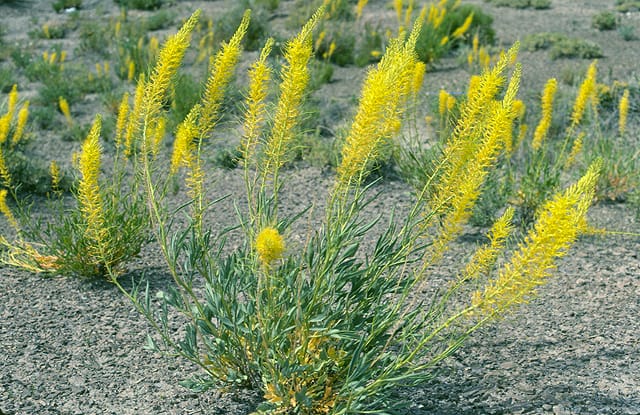
It’s important to note that the prince’s plume (
Stanleya pinnata) absorbs selenium from the soil, making it toxic to livestock.
©Stan Shebs / CC BY-SA 3.0 – License
10. Woody Aster (Xylorrhiza glabriuscula)
Woody aster, a plant native to North America, thrives in various dry habitats like sagebrush steppe and salt desert scrub. Its distribution is primarily limited to Montana and a few other states.
The flowering period of woody aster typically spans from May to June, occasionally extending to July based on local environmental conditions. Its woody stems exhibit branching and are mostly smooth, with some hairs present.
It’s crucial to note that woody aster contains high levels of selenium, making it toxic to horses. Sheep, being the primary grazers, are particularly vulnerable to acute symptoms of selenium poisoning. Severe symptoms may involve bloody discharge from the nose, stiffness, and increased heart and respiratory rates. Without proper treatment, death can occur within 3 to 4 days.
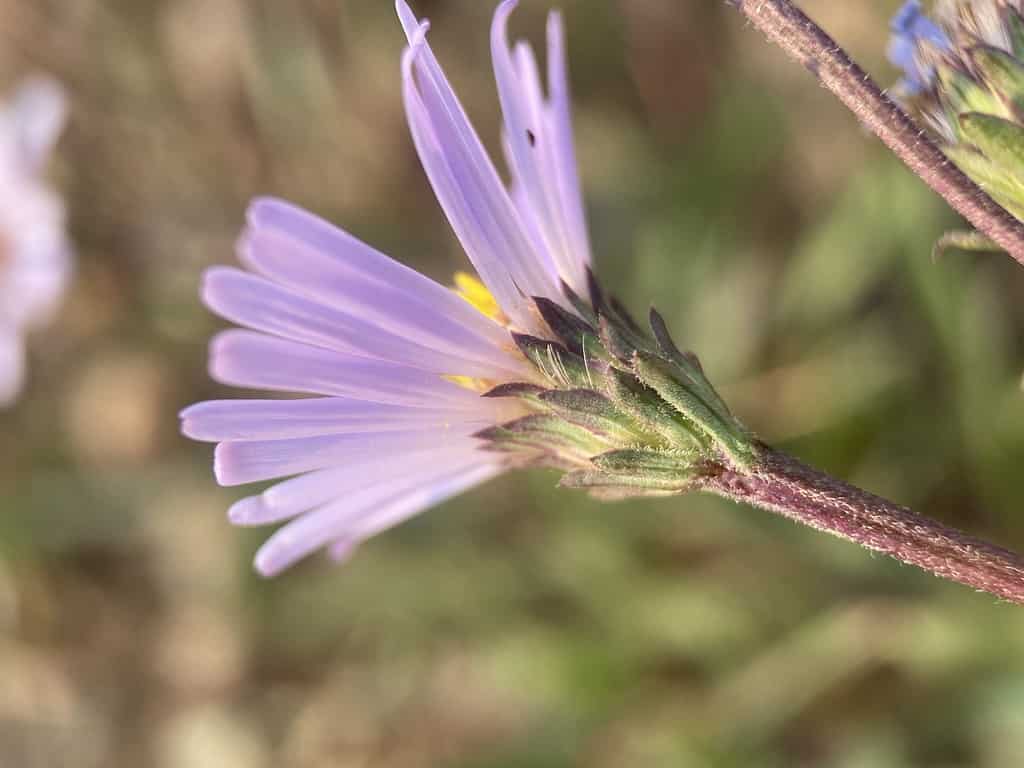
Woody Aster
©Matt Berger / CC BY 4.0 – License
11. Poison Ivy (Toxicodendron radicans)
Poison ivy is another dangerous native plant in Montana. It can be found near water sources, rocky areas, and in the plains and foothills of the lower mountains. This plant can be easily recognized by its green or off-white berries and small, greenish flowers.
Be cautious around poison ivy as it is a common poisonous plant that causes itchy skin rashes. It’s important to avoid ingesting poison ivy, oak, or sumac as it can be harmful and, in severe cases, even fatal. Interestingly, some animals, such as birds, are not affected by poison ivy.
While we often associate poison ivy with spring and summer when it is more prevalent, it’s essential to note that it can cause skin irritation throughout the year.
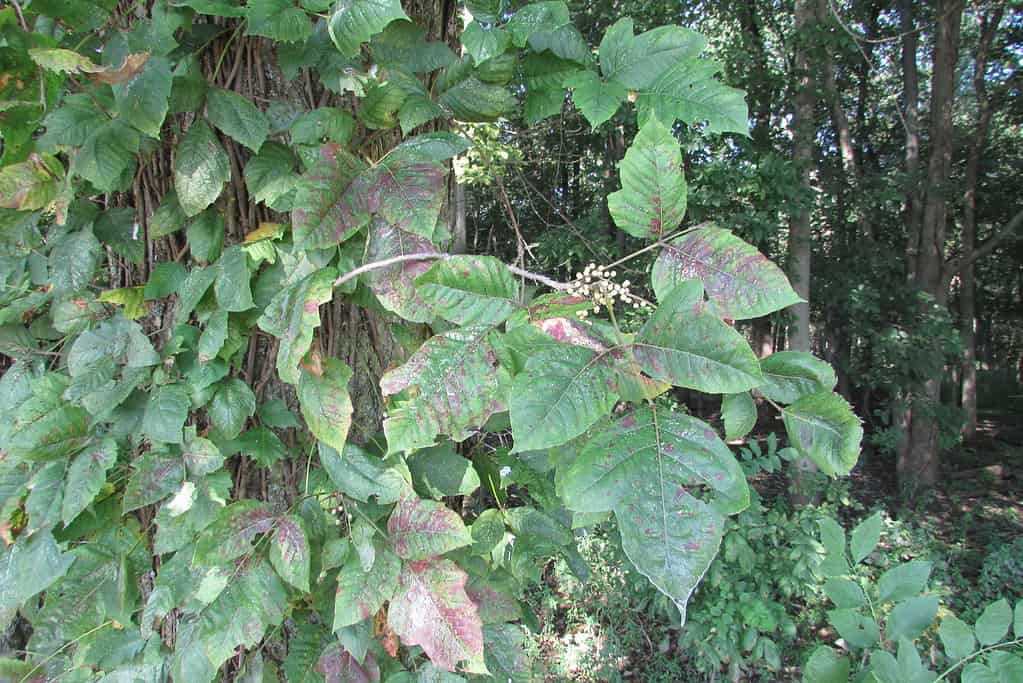
Poison ivy (
Toxicodendron radicans) can be easily recognized by its green or off-white berries and small, greenish flowers.
©Chris Light / CC BY-SA 4.0 – License
12. Silvery Lupine (Lupinus argenteus)
The silvery lupine is a gorgeous yet dangerous plant that can be found in Montana. It’s a fast-growing perennial with lovely silvery-green leaves shaped like a palm. The plant also boasts impressive spikes of blue to violet flowers that resemble peas and can grow up to 8 inches long.
You can spot this beautiful lupine thriving in various locations, such as the foothills of the mountains, dry meadows, open prairies, and forest clearings. Its vibrant blooms emerge during the spring to early summer, attracting butterflies and various pollinators, adding to its allure.
While lupines are visually appealing, it’s important to note that they contain alkaloids that are toxic to both humans and animals. Although livestock has been predominantly affected by toxicity, dogs are also at risk.
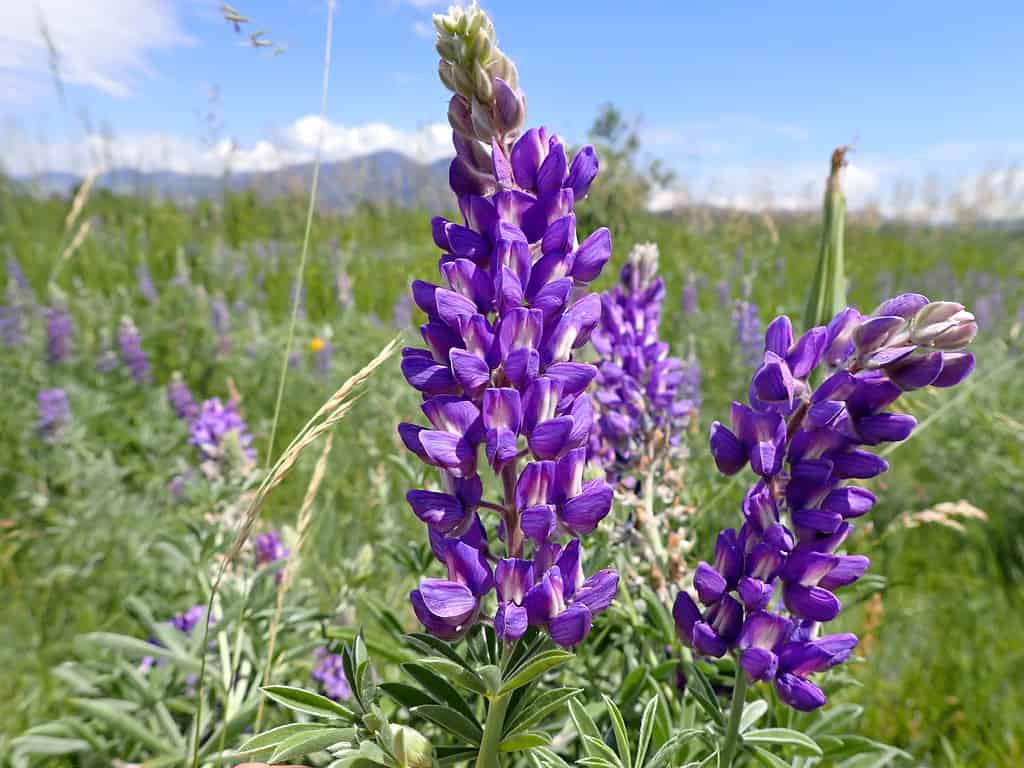
The silvery lupine (
Lupinus argenteus) is a gorgeous yet dangerous plant that can be found in Montana.
©Matt Lavin / CC BY-SA 2.0 – License
13. Sagebrush Buttercup (Ranunculus glaberrimus)
Sagebrush buttercup, a widespread and abundant plant in Montana, particularly in the western half of the state, displays low, basal leaves that often have shallow notches near the tips.
This early spring bloomer awakens by March, forms seed pods in May and June, and typically disappears from sight by July.
Thriving in moist habitats, ranging from sagebrush flats to ponderosa pine forests, sagebrush buttercup boasts vibrant yellow flowers that add a touch of beauty to its surroundings.
Caution must be exercised when handling this plant, as its caustic sap can cause blistering or ulcers on the skin. It should never be ingested, as some species contain highly poisonous chemicals that can induce stomach pain even with a small portion of a leaf consumed. Livestock should also avoid buttercups, as ingestion can lead to severe symptoms such as skin twitching, paralysis, convulsions, and even death.
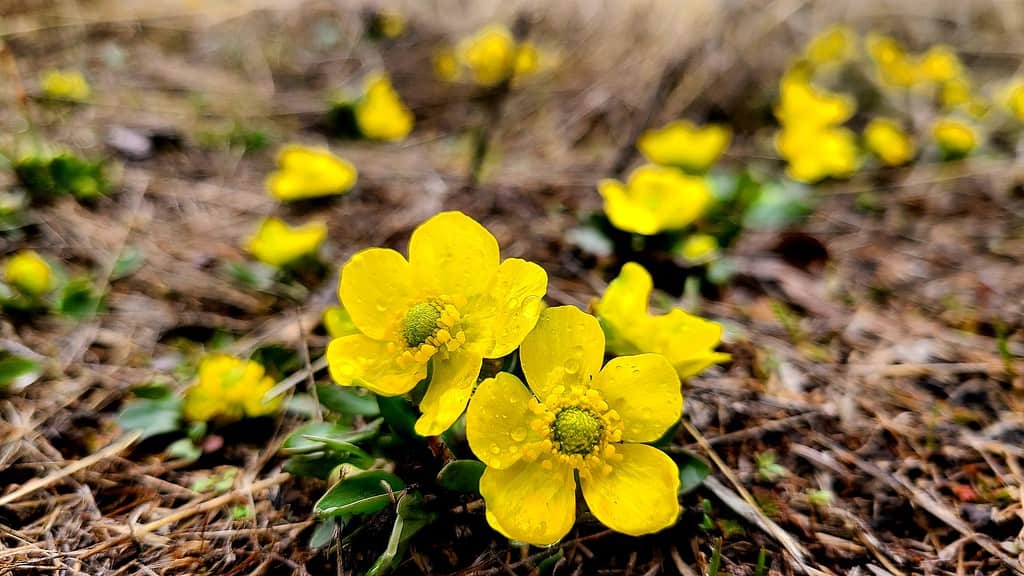
Caution must be exercised when handling sagebrush Buttercup (
Ranunculus glaberrimus), as its caustic sap can cause blistering or ulcers on the skin.
©Forest Service of the United States Department of Agriculture / Public Domain – License
Summary of the Dangerous Plants that Grow in Montana
| Rank | Plant | Poison & Toxin |
|---|---|---|
| 1 | Water Hemlock | Cicutoxin |
| 2 | Poison Hemlock | Cicutoxin |
| 3 | Foothill Death Camas | Zygacine |
| 4 | Meadow Death Camas | Zygacine |
| 5 | Milkweed | Cardenolides |
| 6 | White Locoweed | Swainsonine |
| 7 | Purple Locoweed | Swainsonine |
| 8 | Two-grooved Milkvetch | Swainsonine |
| 9 | Prince’s Plume | Selenium |
| 10 | Woody Aster | Selenium |
| 11 | Poison Ivy | Urushiol |
| 12 | Silvery Lupine | Lupinine |
| 13 | Sagebrush Buttercup | Protoanemonin |
The photo featured at the top of this post is © Laval University / CC BY-SA 4.0 – License / Original
Thank you for reading! Have some feedback for us? Contact the AZ Animals editorial team.






